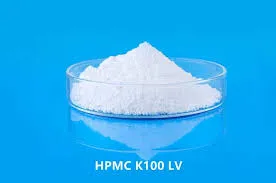
ജുലാ . 25, 2024 04:31 Back to list
Understanding the Meaning and Significance of HPMC in Various Applications and Industries
Understanding HPMC What It Stands For and Its Applications
Hydroxypropyl Methylcellulose (HPMC) is a versatile polymer derived from cellulose, a natural polymer obtained from the cell walls of plants. The acronym HPMC stands for Hydroxypropyl Methylcellulose, highlighting its chemical structure and the modifications it undergoes to enhance its functional properties. This popular compound has garnered extensive use in various industries, ranging from pharmaceuticals to construction, due to its unique properties.
Chemical Structure and Properties
The formulation of HPMC involves the substitution of hydroxyl groups in cellulose with hydroxypropyl and methyl groups. This modification introduces a hydrocarbon chain that significantly alters the cellulose's solubility and viscosity characteristics. HPMC is available in various grades and viscosity levels, depending on the degree of substitution and the intended application, which allows for tailored functionalities.
A key characteristic of HPMC is its ability to form a gel in aqueous solutions, making it an effective thickening and binding agent. It is non-ionic, which means it doesn't carry a charge in solution, facilitating its use in a variety of formulations without causing ionic interference. Furthermore, HPMC has excellent film-forming capabilities, contributing to its widespread application in different fields.
Applications in Pharmaceuticals
In the pharmaceutical industry, HPMC plays a critical role as a binder and thickening agent in tablets and capsules. It ensures the uniformity of the active ingredients and aids in controlled drug release, making it ideal for formulating sustained-release medications. Its film-forming properties are also exploited in coating tablets, providing protection against environmental factors and masking undesirable taste or odors.
hpmc stands for

Moreover, HPMC is utilized in ophthalmic solutions as a lubricant, enhancing comfort for users of contact lenses. Its presence in personal lubricants also highlights its biocompatibility and safety for sensitive applications.
Role in the Food Industry
HPMC's ability to improve texture and stability makes it a valuable ingredient in the food sector. It acts as a thickener, stabilizer, and emulsifier, enhancing the mouthfeel of food products without contributing any calories or fat. Common applications include salad dressings, sauces, ice creams, and gluten-free baked goods, where it helps to mimic the texture provided by gluten.
Construction and Building Materials
HPMC has found extensive application in the construction industry, particularly in cement-based dry mixes. It acts as a water-retaining agent, improving the workability of mortars and plasters while preventing premature drying. This property is crucial for ensuring the longevity and durability of structures. HPMC enhances the adhesion of these materials to various surfaces and helps achieve a smooth finish.
Conclusion
In summary, Hydroxypropyl Methylcellulose (HPMC) embodies versatility across multiple industries due to its unique chemical properties and modifications. Its applications in pharmaceuticals, food, and construction demonstrate its significance as a functional ingredient. As the industries continue to evolve, the demand for high-performance materials like HPMC is likely to grow, further establishing its importance in contemporary manufacturing and formulation processes. Its non-toxic nature and adaptability make HPMC a vital component, contributing to innovations and advancements across various fields. As we move forward, understanding and utilizing HPMC's properties will remain essential for creating effective, safe, and sustainable products.
-
Unlocking the Benefits of HPMC Products: A Gateway to Versatile Applications
NewsAug.07,2025
-
Unleashing the Potential of HPMC Ashland: A Comprehensive Look
NewsAug.07,2025
-
Tile Bonding Cellulose: The Key to Superior Adhesion and Durability
NewsAug.07,2025
-
Hydroxypropyl Methylcellulose Powder: The Versatile Component in Modern Pharmaceuticals
NewsAug.07,2025
-
Hydroxyethyl Cellulose: The Versatile Solution for Various Industries
NewsAug.07,2025
-
Hydroxyethyl Cellulose (HEC): The Versatile Polymer for Various Applications
NewsAug.07,2025







